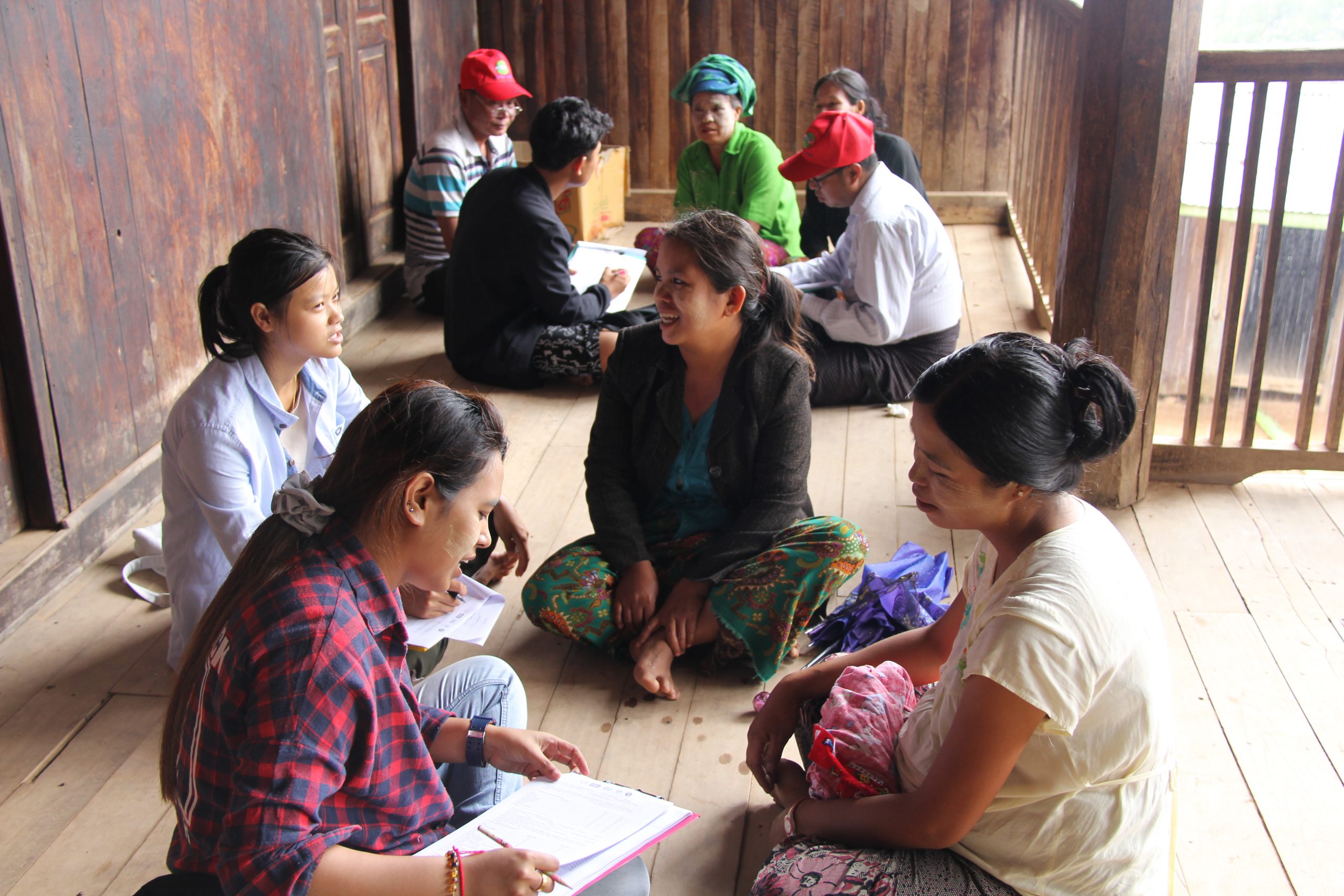By The Institute for Global Environmental Strategies (IGES)
“Resilience cannot flourish in an environment where those affected most by disaster and climate risk are excluded.” – Su Su Kyi, Professor, Department of Geology, University of Yangon
A majority of the population in the ASEAN region live in riverine and coastal plains that are vulnerable and subject to periodic and extensive hazards, such as floods and landslides. Climate change has created an urgent need for the people of ASEAN to equip themselves against disasters and promote a shift from disaster response to building a disaster resilient community[1].
“Disaster Risk Reduction by Integrating Climate Change Projection into Flood and Landslide Risk Assessment (ASEAN DRR-CCA)” aims to demonstrate the integration of climate projections into flood and landslide risk assessments and equip ASEAN Member States with tools and techniques on risk assessments and mapping for better land-use planning.
Here are four stories told by project stakeholders from Lao PDR, Myanmar, and Thailand based on their experiences in participatory on-site learning and integrated disaster risk reduction trainings conducted by the ASEAN DRR-CCA project.
Read more Impact Stories on the DRR-CCA’s website.

Testimonial from
Bounsavanh Vongbounleua
Technical Officer, Department of Climate Change, Lao PDR
The village is nestled along the foot of the hills. Access to timely information and assistance remains a challenge
 Bounsavanh Vongbounleua - Technical Officer, Department of Climate Change, Lao PDR © IGES
Bounsavanh Vongbounleua - Technical Officer, Department of Climate Change, Lao PDR © IGESEmpowering communities through multi-level approaches
“The village is nestled along the foot of the hills. Access to timely information and assistance remains a challenge”
Early warning is one of the key tools of disaster risk management that can build the resilience of vulnerable communities prone to periodic and extensive hazards, such as floods and landslides. Early warning saves lives by alerting the people to imminent dangers and empowering them to make decisions that can help protect their lives and livelihoods.
According to Bouasavanh, two measures were needed to better prepare the communities in times of disaster: installation of megaphones and resettlement areas. Most villages rely on warnings from their own neighbors. There are no megaphones installed in the communities. “Early warning, when linked to early action can help mitigate the effects, complementing governmental mandates to protect lives.”
Land scarcity is of grave concern to many settlements who are forced to build houses on vulnerable, landslide-prone lands along the roads with steep cut slopes. In collaboration with local authorities and the government, the ASEAN DRR-CCA Project carried out a detailed risk assessment study. “Many areas have higher potential for occurrence of landslides in future. The observed vulnerabilities are common to rural and semi-urban areas of some of the ASEAN countries. Immediate counter-measures will help mitigate disaster loss and help save lives.”

Testimonial from
Daw Ngwe Yin
Myo Ma Quarter, Myanmar
 Myo Ma Quarter, Myanmar © IGES
Myo Ma Quarter, Myanmar © IGESStriking with no warning
Days of heavy rains triggered devastating landslides and flash floods. Tons of mud, rocks, and debris from surrounding hills slammed into neighborhoods on the night of 3 August 2019, collapsing walls and filling homes with water and mud. “I have never seen anything like this. The noise was awful, beyond imagination. I am physically blessed to be alive.” – Daw Ngwe Yin was among the many victims affected by the disaster. She was no longer safe there.
When Daw Ngwe Yin heard about the project coming to her township, she immediately persuaded her granddaughter and neighbors to join. Supported by JAIF, a community-based disaster risk reduction exercise was carried out as part of the project. This was among the first platforms to bring the community together, including women, to discuss and brainstorm climate-inclusive community risk reduction.

Testimonial from
Su Su Kyi
Professor, Department of Geology, University of Yangon
Resilience cannot flourish in an environment where those affected most by disaster and climate risk are excluded.
 Professor, Department of Geology, University of Yangon ©IGES
Professor, Department of Geology, University of Yangon ©IGESTowards disaster-resilient ASEAN communities
In the recent past, several significant disaster events were reported in various parts of Myanmar. Floods, cyclones, droughts, and landslides have become major types of disaster events with serious impacts on day-to-day life of the people and the economy. Shan State is not an exception.
Perceptions of people towards disaster risk and preparedness vary. During on-site risk assessment surveys in Taunggyi, the survey team had the opportunity to interview and conduct a focused group discussion with local communities living along high susceptibility zones. “My experience in conducting these interviews and over 200 surveys show how useful they are. People are so hopeful and want to make a difference in their communities. It makes me realise how important this process is.” Resilience cannot flourish in an environment where those affected most by disaster and climate risk are excluded. Integrating local knowledge and science will allow us to assess existing and arising risks more accurately.

Testimonial from
Mallika Nillorn
Geologist, Department of Mineral Resources, Thailand
Commitment to collaborative action for disaster risk reduction can generate learning and improved practice for all stakeholders.
 Geologist, Department of Mineral Resources, Thailand ©IGES
Geologist, Department of Mineral Resources, Thailand ©IGESFostering multi-stakeholder cooperation
The collaborative effort is an integral part of this ASEAN DRR-CCA project design. Uttaradit Province of Thailand was selected as one of the case visit sites. The participatory learning and training implemented by the project are designed to expose participants to relevant good practices on landslide risk assessments and mapping – e.g., landslide watch network, community committee on disaster management, etc. – while providing peer-to-peer learning among ASEAN countries.
A locally-established landslide warning system, called “durian funding”, encourages villagers to put in 2-3 durian fruits which then gets transformed into money used for supporting disaster management activities. “Risk reduction measures need to be specific to the risk profiles of particular locations.” Witnessing inspiring achievements through the participatory on-site learning and integrated disaster risk reduction training, she hopes that this model project will be replicated and shared across other ASEAN countries.
 Landslide Field Survey in Taunggyi, Myanmar
Landslide Field Survey in Taunggyi, Myanmar
©IGES
The lessons and rich experiences were compiled in the form of Flood and Landslide Guidelines, Implementation reports of River Basin Pilot Sites, Flood and Landslide risk maps and land-use planning, and case visit reports. The guidelines serve as reference materials in ASEAN for a river basin scale landslide and flood risk assessment incorporating climate change and are also utilised in decision-making processes.
The project contributes to the ASEAN Agreement on Disaster Management and Emergency Response (AADMER) Work Programme 2016-2020 specifically under the Priority Programme 3, Advance: A Disaster Resilient and Climate Adaptive ASEAN Community. It aims to contribute to the overall goal of ASEAN in “building resilient ASEAN Community to reduce disaster losses and collectively respond to disasters.”
[1] ASEAN DRR-CCA Introduction Video: https://www.youtube.com/watch?v=YR-ulN8dWHs
Sectors
Funding Framework



